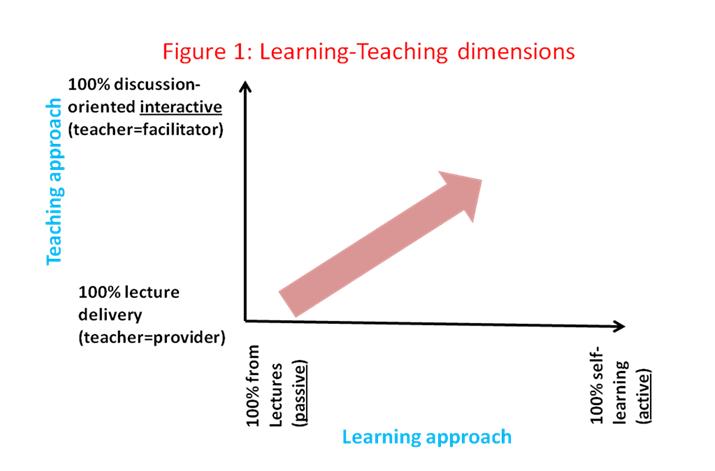Nepal: Content Development
Translate this page with Google -español -български -中文(中国大陆) -中文(臺灣) -hrvatski -čeština -dansk -Nederlands -suomi -français -Deutsch -Ελληνικά -हिन्दी -italiano -日本語 -한국어 -norsk -polski -português -română -русский -svenska
During the teacher training, the participants spent a lot of time familiarizing themselves with our E-Paati interactive activities. As they were going through the activities, we clarified to them the basic principles we have adhered to in designing these activities. Here is a overview of what we discussed.Types of digital content
The digital content (teaching-learning materials) under development at OLE Nepal fall under three categories:
1) Interactive educational content: These are subject and grade specific interactive activities (software modules) that follow the national curriculum. The teachers and students will use these software modules as part of the regular instruction process. Using these activities, the students can learn new concepts, do practice exercises, and self-assess their progress. In short, these learning activities enhance the possibility of self-learning.
2) Electronic library (e-library): This is a digital library containing full-text materials that can be accessed by students, teachers and families. It contains six major sections: literature, course-related materials, reference materials, teaching support materials, general educational materials and newspapers/magaizines. Our E-Paati interactive materials will also be included in the course-related materials section.
3) Student/teacher creations: These are writings, interactive activites, and or creative works by prepared and uploaded by the students and teachers themselves.
Overview of the concepts behind interactive content
The development of activities at ;femf lzIff O{–kf6L is guided by a set up principles that are based on the assumption that children can learn a lot of things on their own if they are provided with an opportunity to interactively explore new concepts and review old ones in a fun way. The interaction in this context is primarily with the computer though some activities might also require interactions with other people. It is expected that the interactive activities being developed will help the teaching-learning approach in Nepal to move in the direction shown by the arrow in Figure 1 below.
A key ingredient in any interactive educational activity is the “fun” element. If students do not see any fun in doing these activities, then they will probably view the computer activities as nothing more than digitized versions of routine textbooks. Hence a core principle of activity design is that learning can and should be fun. “Fun”, of course, is a relative concept. We would be hard pressed to claim that any of our activities are more fun than say playing in the rain, rolling in the mud, or jumping around in puddles. When we say fun, we mean fun compared to some of the traditional approaches to teaching and learning. We should, therefore, try to inject a healthy dose of the fun element in all activities.
Before detailing the principles of activity design, it is worth clarifying the general teaching-learning objectives of these activities. Broadly speaking all interactive activities aim to do one or more of the following:
(1) teaching new concepts,
(2) providing practice to help absorb learned concepts,
(3) providing opportunities for evaluating one’s understanding of a concept, and
(4) providing opportunities for correcting errors in understanding.
So when designing activities, it is also important to clarify which of these goals are being met by each activity. This clarification will be crucial in conceptualizing how an activity will be used in the classroom by teachers and students, and at home by students.
Content Development Principles
Fundamental principles of E-Paati interactive activity design
The following principles guide the development of all activities. In order to maximize the teaching-learning effectiveness of this project, each activity must be:
1. Consistent with CDC curriculum objectives:
· The activity must be designed to meet specific learning objectives laid out by the curriculum development center.
2. Interactive:
· The activity should be designed to maximize student interaction with the computer.
· In some cases, there might also be interaction with other students and teachers
3. Child-centric:
· Children should be able to relate to the activity.
4. Localized:
· The activity should be consistent with the Nepal context. In particular, the images, text, audio, and “story” should be “Nepali” in the broad sense of the term.
· The activities should try to reflect the diversity present in the Nepali context.
5. Multimedia oriented:
· To the extent possible, the material should stimulate the different senses of the learner. This will make the material more interesting and understandable.
· So the activity should be designed to integrate text, images, audio, and animation where relevant and possible.
6. Self-learning/self-assessment oriented:
· The activity should enable the user to learn the material on her own.
· Where relevant, the activity should allow the learner to correct mistakes as she proceeds.
· Where relevant, the activity should also enable the user to evaluate how well she has performed. For example, most of the match activities display the total number of question and the total number of correct answers.
7. FUN:
· The fun dimension is extremely important. The goal is to capture the interest of the student even when the teacher is not there to prod her.
· There are, however, different degrees of fun. Enhancing the fun dimension can be thought of as
i. Moving from simple academic exercises è to games.
ii. Moving from isolated exercises è to stories or challenges that will take the student to an exciting “finish-line” (e.g., reaching the top of a mountain, or discovering a hidden treasure).
iii. Moving from less multimedia è to more multimedia.
